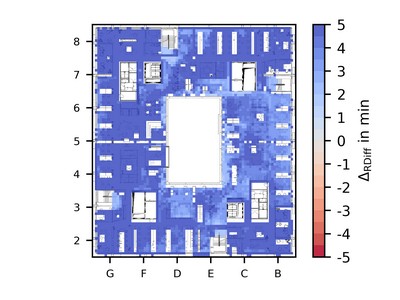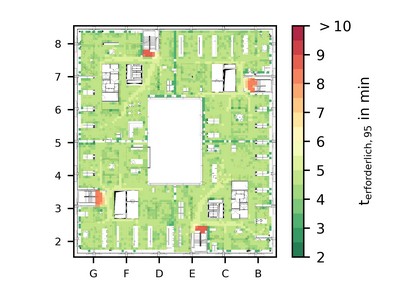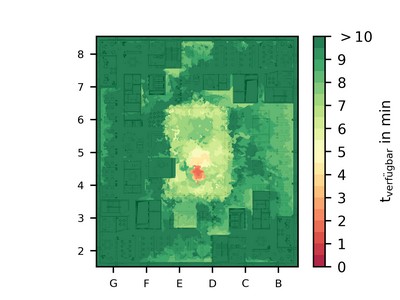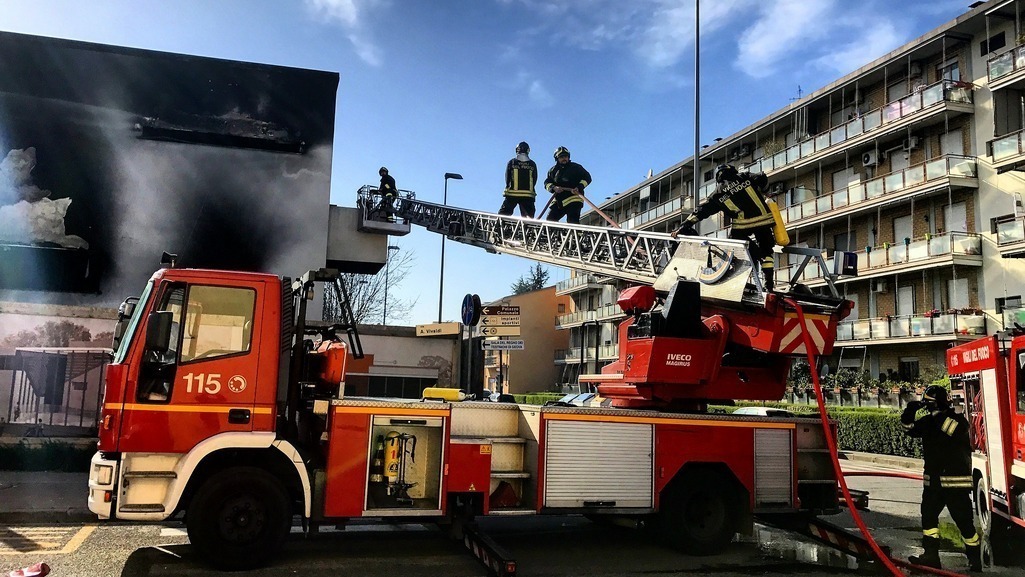The evacuation of complex buildings can be a challenging design task. Core objectives are to ensure a safe evacuation in case of fire, to prevent congestions and to ascertain ingress for the arriving fire brigade. My job as a fire protection engineer is to evaluate a particular design of a building. For this I use several tools, among others pedestrian flow simulation.
Explaining my methods works best with an example. In 2016, my company has been commissioned to carry out the fire safety design of a new office campus in Munich, Germany. Part of the campus are three squared buildings with five stories, each of them having a fully open atrium in its center. Since the building characteristics are not fully represented by the prescriptive building codes, we applied a so-called performance-based design approach. In concrete terms, we carried out computer-based fire and evacuation simulations in the frame of multiple scenario combinations. The two most important variables when doing this are ASET and RSET.

How much time do occupants have to escape?
Let’s start with ASET. It stands for the time that is available for safe egress. The occupants in the building need to get out before the fire effects (e.g. smoke extinction or temperature) become unacceptable. With fire simulation data, we can predict these effects and calculate ASET for multiple fire scenarios.
While ASET focuses on the fire, RSET focuses on the occupants. I use PTV Viswalk to simulate their movement and walking behavior in case of an emergency. That allows me to calculate the required safe egress time, i.e. the time the occupants will actually need to leave the building.
The analyses of both ASET and RSET are conducted on the basis of maps. I then subtract RSET from ASET to get a difference map. It contains the so-called safety margin throughout the entire floor plan.
The result: The new office campus is safe
The analysis of multiple scenario combinations showed that the safety margin is sufficient to ensure an evacuation of the office spaces before any fire effects become unacceptable. Moreover, the RSET maps give no hint about critical congestions which delay the evacuation of the office spaces. Likewise, the RSET analyses also show that the escape routes are capable to lead away all building occupants when the fire brigade arrives at the scene and starts its operations




The representation of ASET vs RSET is very nice. However, it very hard to look at these in detail when the image changes every few seconds. It would be nice to show static images.
Thank you very much for your feedback. We’ve adjusted the time until the next image is displayed. This should allow you to examine the images without a hurry.
Best regards,
PTV Blog Admin Team